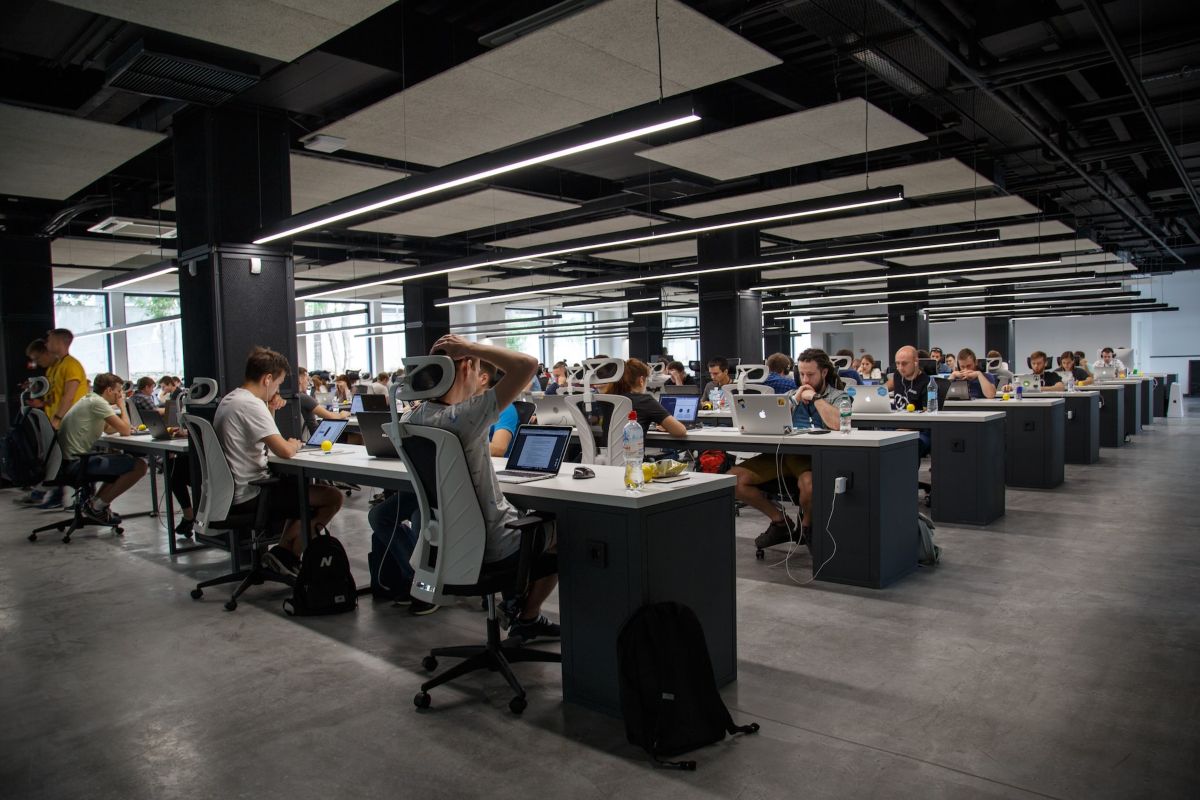1 in 3 people stated that their return to the office negatively impacted their mental health. Returning to the office can be anxiety-inducing for employees, but businesses may need to implement office work to improve productivity and collaboration.
So, how can businesses help their employees manage reentry anxiety?
Keep reading as we discuss the best tools and strategies to help your employees feel more comfortable returning to the office. Improving employee satisfaction is vital to staff retention, so don’t miss out on this advice before beginning your return to the office.
4 Top Strategies For Helping Employees Manage Their Reentry Anxiety

Here are some of the best strategies and tools for reducing employees’ stress when returning to the office.
1. Implementing Hybrid Work With Desk Management Software
If your employees feel anxious about returning to work, you can implement the return slowly with a hybrid work pattern. Employees can visit the office for meetings and collaboration and work at home as they see fit.
Hybrid working is an excellent way to ensure your employees’ return to work is not overwhelming, allowing them the chance to enjoy the comfort of working from home while enjoying the benefit of office resources.
However, with a hybrid work model comes the need to ensure employees have access to office resources and desk space when needed – without any uncertainty. If your employees travel to the office only to see that all desks are in use, this could cause frustration and discouragement. So, to make your employees feel more comfortable using office resources, you can invest in desk management software.
Desk management software is a desk reservation system that provides your employees the opportunity to reserve a desk when they plan to visit the office. The software shows a digital interface of your office floor plan, along with which desks have been booked and which ones are available.
It’s essential that your employees feel supported when they visit the office, and desk management software allows them to see who has booked each desk so they can sit with their team or friends.
2. Automated Wellness Verification
One of the employees’ most significant fears when returning to work is the risk of coronavirus exposure. You can make your employees feel safer at work by implementing automated wellness verification.
If a symptomatic employee enters the workplace, this could cause an outbreak of coronavirus that could seriously impact productivity. So, it’s imperative to ensure any symptomatic individuals are restricted from accessing the office.
Automated wellness verification is a software solution that integrates with access control, providing employees with digital forms they must complete on their mobile devices to gain entry.
These forms will contain questions regarding their temperature, whether they have had a persistent cough, or whether they have been in contact with someone who tested positive for COVID-19.
If they have filled out the form and show no symptoms or risks, they will be allowed to enter the building. If they are symptomatic, however, the system will restrict their access. From here, you can either recommend that they take a coronavirus test or work from home for a set time.
Wellness verification software doesn’t just help with coronavirus screening. It is also a valuable tool to help your HR team keep in touch with your employees’ mental well-being. Instead of implementing coronavirus screening surveys at your building’s entrance, you can implement wellness surveys.
You can customize questions to gauge how comfortable your employees feel when working in the office, whether they are experiencing stress, and any suggestions they have for promoting a culture of emotional and mental wellness in the office. You must start an open dialogue with your employees concerning their mental health.
If these surveys indicate that employee wellness isn’t at optimal levels, you can plan wellness seminars and retreats for team building and to improve employee mental health.
3. Touchless Access
You can also combine automated wellness verification with touchless access in your commercial office building for added hygiene.
Installing hands-free access, such as a door card reader system, is an effective way to both avoid germs and give employees convenience through being allowed access through just having their mobile phone in their bag or pocket.
4. Antimicrobial Surfaces And Touchless Hygienic Technology
To keep your employees safe and healthy upon their return to the office and mitigate any concerns they may harbor about their health, you can implement hygiene-based technologies and antimicrobial surfaces.
Antimicrobial surfaces cover touchpoints throughout your building that could carry and spread germs. You should invest in antimicrobial surfaces for elevator buttons, handle rails, door handles, and any other frequently touched areas in your building.
Using antimicrobial surfaces will significantly lower the potential for spreading germs in your building and put your employees at ease.
You can also invest in contactless entry systems to ensure your employees can enter the building without pressing buttons or touching pin pads. Touchless access control allows users to enter using mobile credentials; all they have to do to enter the building is wave their hand over the access reader. This motion will trigger remote communication with their mobile device to unlock the door.
Summary
If you want your employees to feel comfortable and happy returning to the office, you should consider the benefits of implementing hygiene-based technology and wellness surveys.
Your employees need to know that their management considers their health and safety a priority. Implement the above technologies to decrease office re-entry stress and promote a culture of health and wellness.
Read Also:
- 9 Things Great Managers Do To Support Their Employees
- 4 Creative Ways To Help Your Employees Adapt To New Technology
- 10 Leadership Traits To Look For When Onboarding IT Employees
Author: Thomas Wright
















